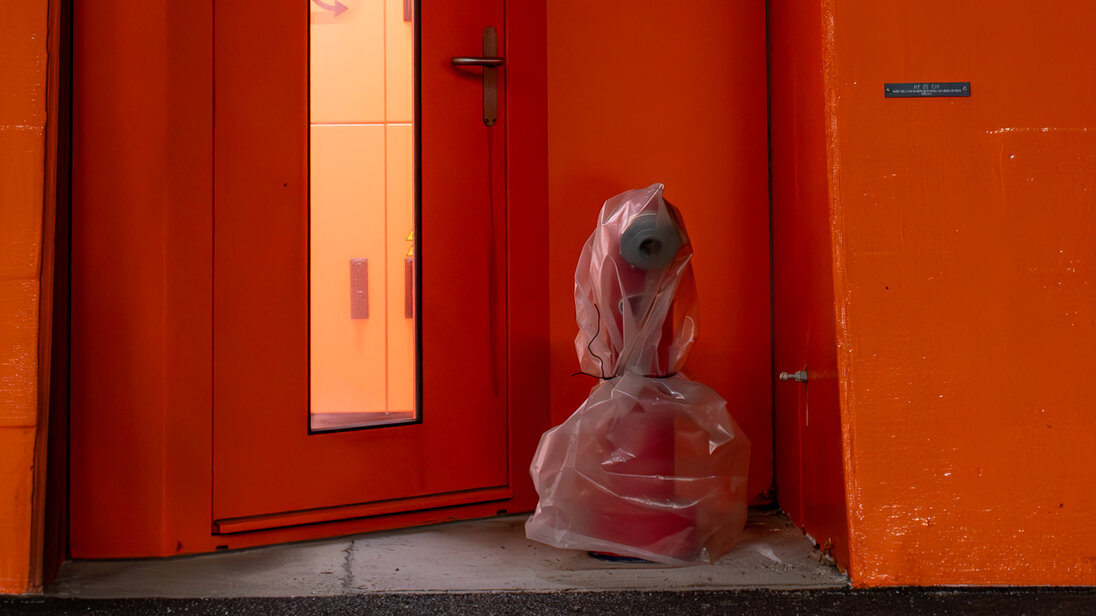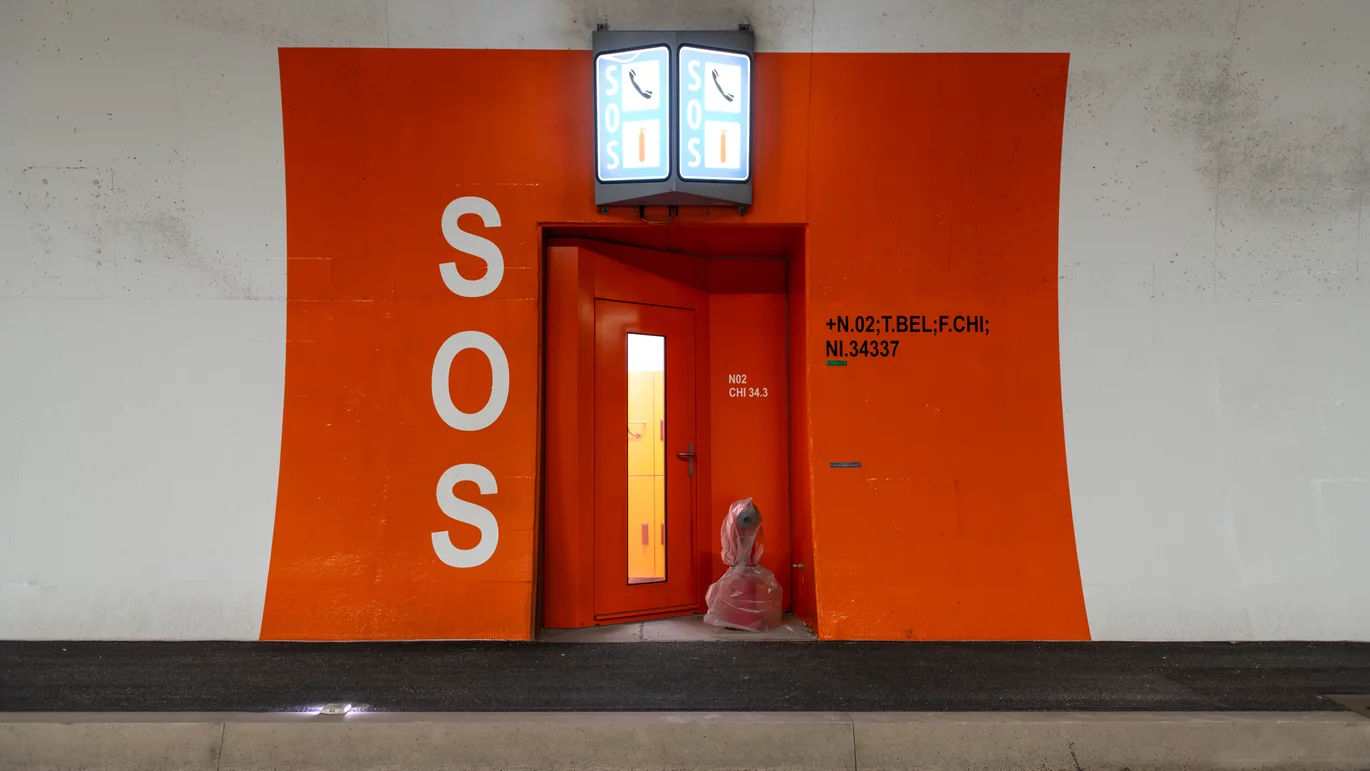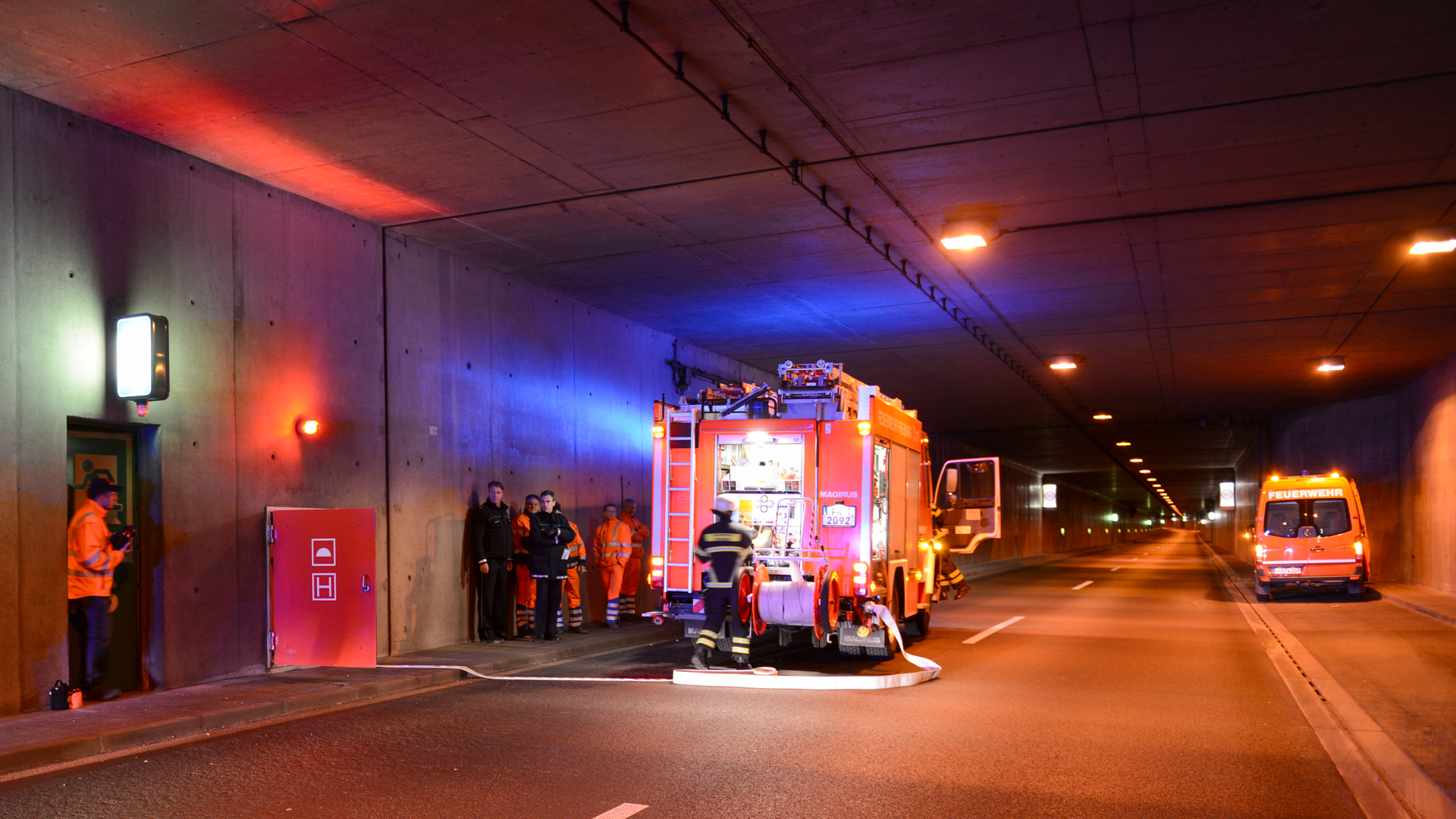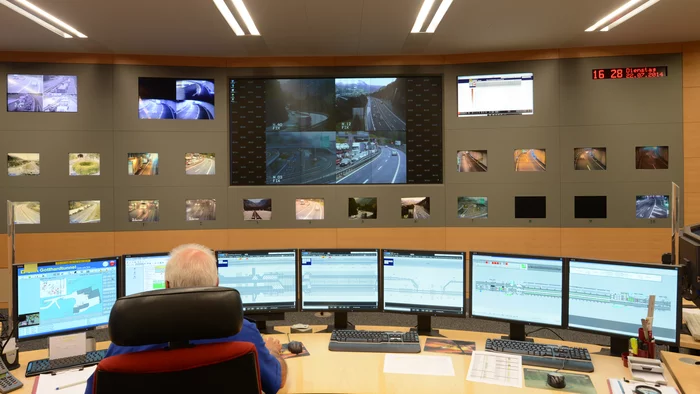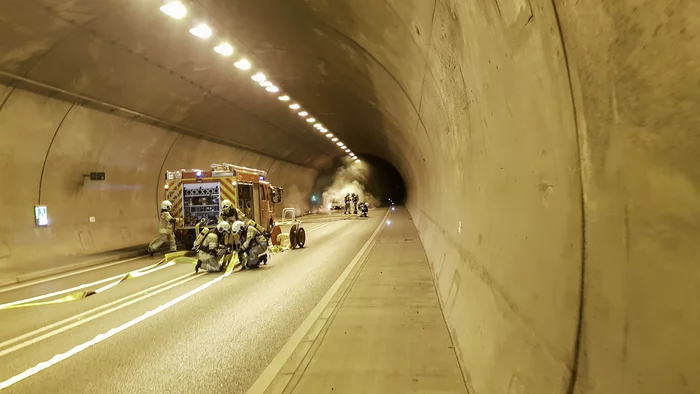Are SOS cabins in road tunnels safe areas? There is a clear answer to this question: No! Therefore, they must be searched for by the fire service during firefighting operations. In this magazine article, we explain how and why tunnel users can use SOS cabins, as well as the differences between SOS cabins and emergency exits.
Protection against noise, not smoke
The doors of SOS cabins are not smoke-tight. The cabins themselves are not pressurised and are therefore not safe areas. However, they significantly reduce the noise generated by ventilation systems and traffic. It eases communication with the operations centre via the easy-to-use intercom system. There are usually two fire extinguishers in the cabinet next to the SOS telephone. Other technical installations in the SOS cabins are irrelevant for tunnel users and firefighters.
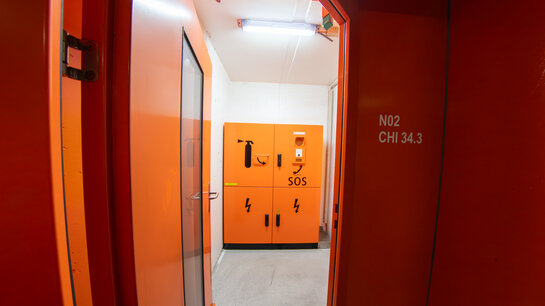
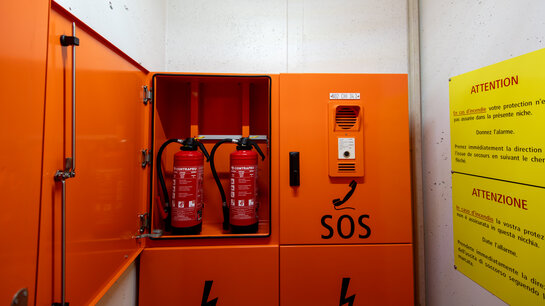
SOS cabins must be searched
Despite clear warnings, it cannot be ruled out that tunnel users may remain in an SOS cabin. For example, during the fire in the Tauern road tunnel on 29 May 1999, the Zedernhaus fire service rescued three people from an SOS cabin in thick smoke.
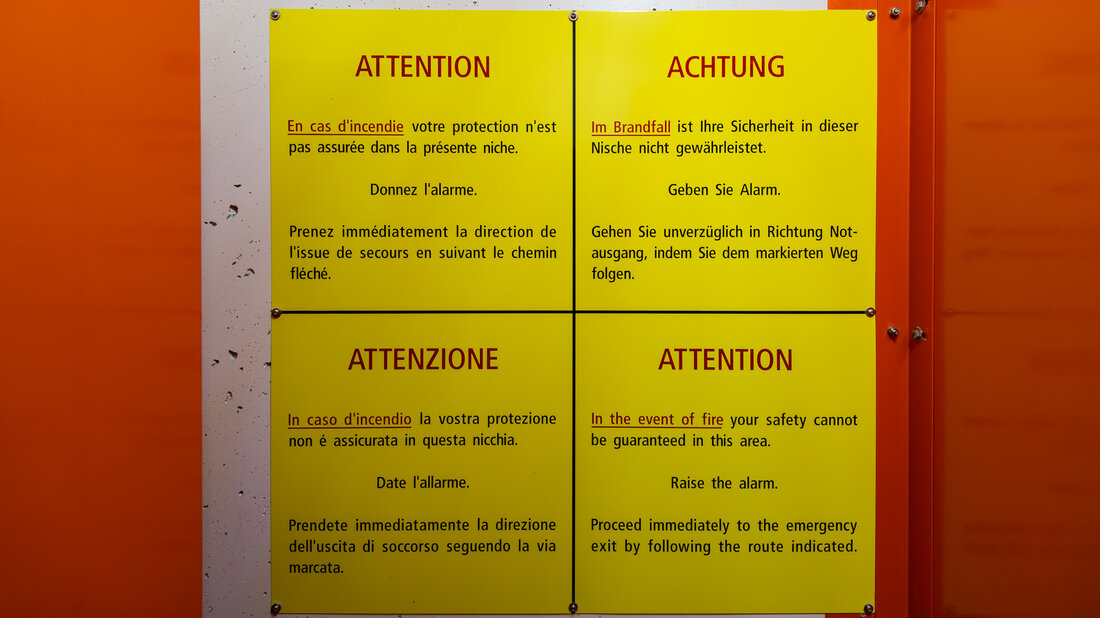
The reasons why people remain in an SOS niche can vary greatly. They may be afraid, uncertain, or have misunderstood the warnings. It is also possible that the tunnel in front of the SOS cabin fills with black smoke during the emergency call, and it seems less dangerous to users to remain in the cabin than to venture into the smoke. In any case: The SOS cabins must be searched by the search and rescue teams.
Emergency exits lead to safe areas
SOS cabins are marked in orange in most European countries. In accordance with the European Tunnel Directive, emergency exits are marked in green in all EU countries and Switzerland. They always lead directly into or to a safe area – be it a safety tunnel, a shelter, a parallel tube or directly into the open.
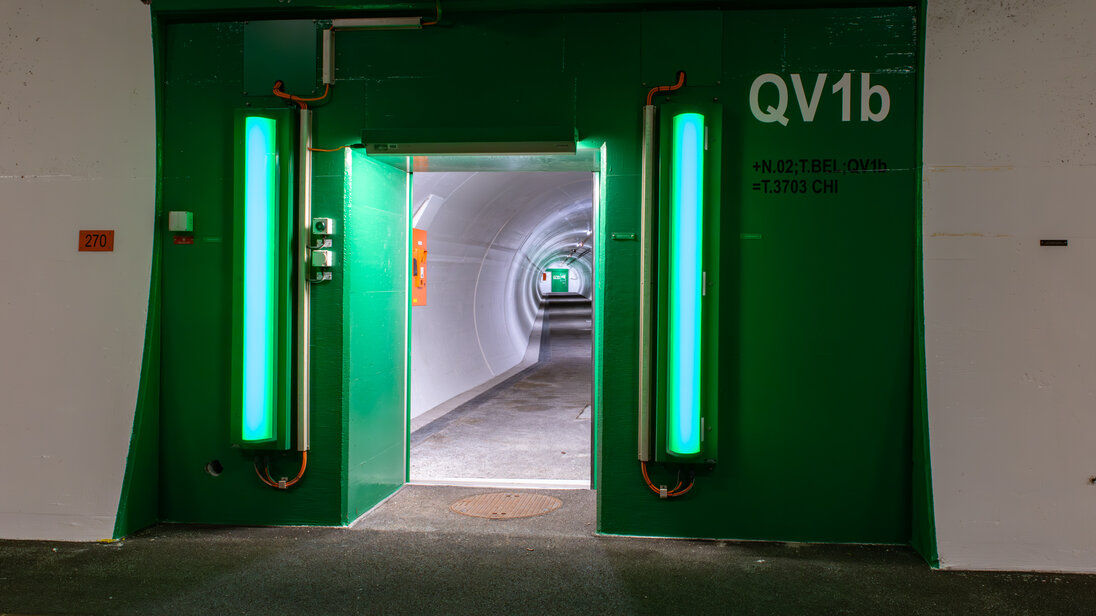
Emergency call devices at emergency exits
As a rule, SOS intercoms are also located at emergency exits. It is therefore not necessary to use the SOS cabin to make an emergency call via the tunnel's communication facilities. Incidentally, these communication devices can also be used by emergency services if, for example, the tunnel radio system for the emergency services fails.
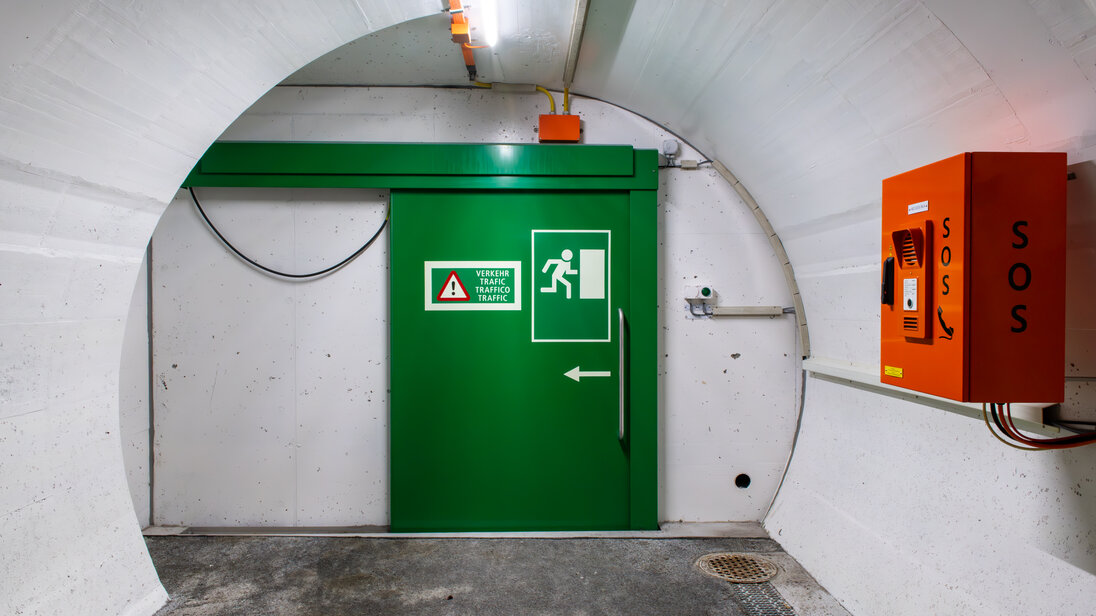
Know your tunnel
The International Fire Academy recommends that fire services conduct regular inspections of their tunnel facilities. It is the only way for fire services to familiarise themselves with the safety installations. During such inspections, fire service personnel can also learn, for example, that a plastic cover over a hydrant does not necessarily mean that it is out of service. The cover serves solely as protection against contamination of the hydrant from everyday traffic.
